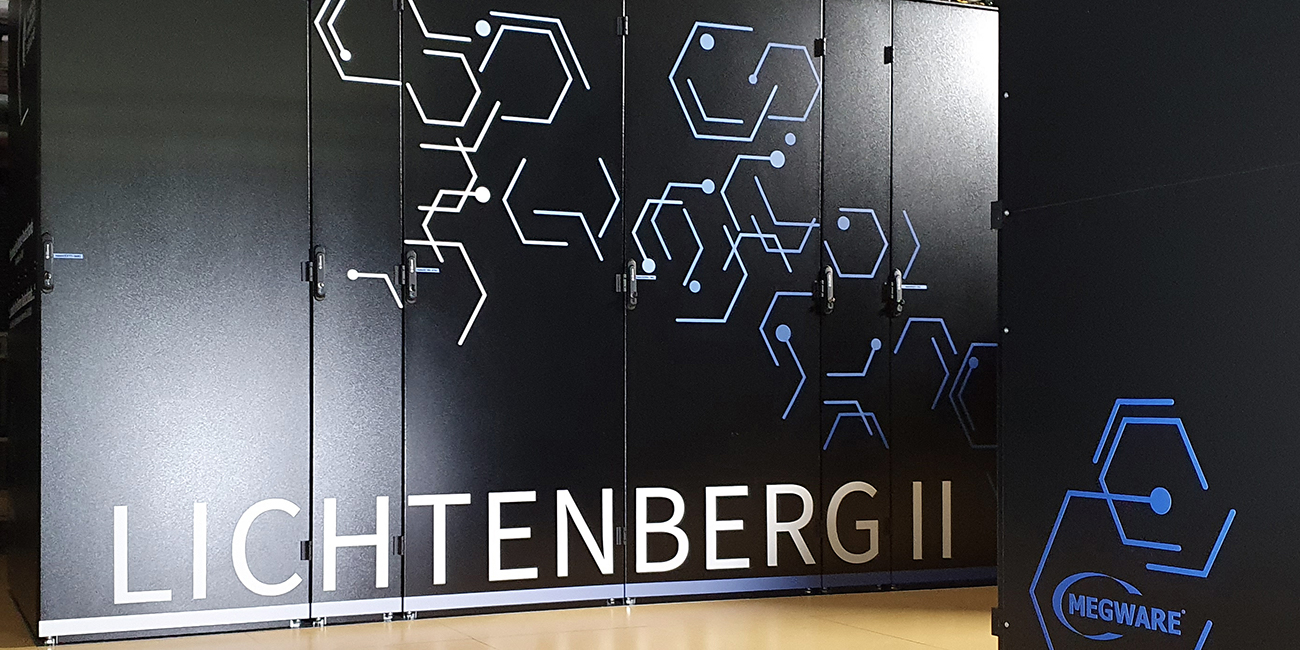High Performance Computing
The series of Lichtenberg high-performance computers at TU Darmstadt provides computing resources for researchers from academia and public research facilities in Germany. The multifaceted architecture of the high performance computer allows for flexible and efficient scientific computing, especially for computationally intensive applications.
Film: Inauguration of Lichtenberg II high-performance computer
In mid-July, Lichtenberg II high-performance computer of TU Darmstadt was officially put into operation. Equipped with the latest technology, it sets standards in performance and energy efficiency and thus offers the best conditions for excellent research. Our two-minute film provides insights into the ceremonial inauguration and a tour of the high-performance computer.
The Lichtenberg II system
In 2020, the first expansion stage of the Lichtenberg II system with 643 computing nodes was put into operation; this will be expanded by 581 computing nodes with the second expansion stage. Together, the two expansion stages will provide a theoretical peak performance of approximately 8.5 petaflops per second (PFlop/s) through processors and 1.7 petaflops per second through accelerators. The main memory totals 563 terabytes, the storage system for data around 6 petabytes.
Highly efficient energy management concept
Energy-efficient computer systems and sustainable use are key goals for TU Darmstadt. For this reason, the waste heat from Lichtenberg II is not simply released into the environment, but during the heating period, a significant portion is fed into the district heating network that connects all buildings on the Lichtwiese campus.
For this purpose, Lichtenberg II uses direct and highly efficient hot water cooling to fully utilize the power of the processors. In the process, special heat exchangers and coolant distributors enable high return temperatures of more than 45 degrees Celsius to ensure sensible reuse of energy and efficient cooling. This leads to a significantly improved CO2 and energy balance and is an important step towards sustainable high-performance computing.
Funded by the German Federal Government and the State of Hesse
The entire Lichtenberg II system (all expansion stages) is funded by the German Federal Government and the State of Hesse with a total amount of ~15 million euros.
The experts of the “Hessisches Komptenzzentrum für Hochleistungsrechnen” (Hessian Competence Center for High Performance Computing) will provide for consultancy and scientific support on using the cluster efficiently and hosts various workshops on scientific HPC.
-
![]()
![]()
2FA at Lichtenberg HPC
November 24, 2025
for password-based authentication
No changes for key-based ssh access to the Lichtenberg cluster.
-
![2FA]()
![2FA]()
Mandatory use of Two-Factor Authentication (2FA) by the end of 2025
November 17, 2025
Act now – activate 2FA and protect your TU ID and TU Darmstadt.
Cyber attacks on universities are increasing significantly. 2FA provides reliable protection against unauthorised access and is a key component of IT security at TU Darmstadt.
-
![A green key in a green circle]()
![A green key in a green circle]()
Upload of and Login by ssh Public Key
November 03, 2025
More convenient (and more secure!) logins to the HPC
For the key-based ssh access to the Lichtenberg cluster, you can now upload a suitable ssh public key into the TUDa IDM system.






